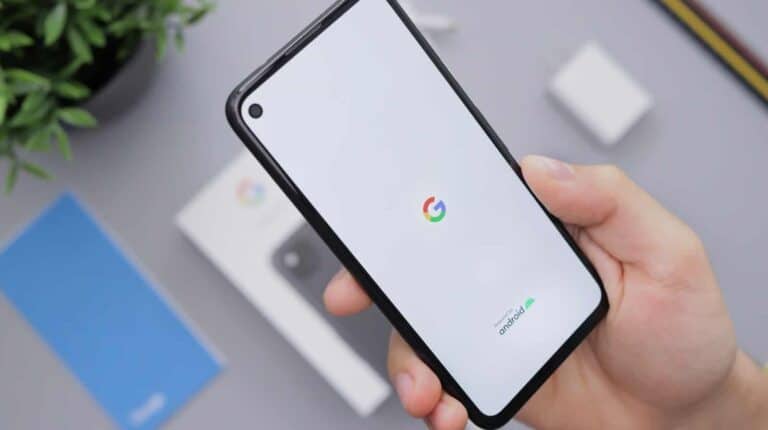
##4636##* is a hidden dialer code for Android phones that unlocks access to valuable device information. This code opens a menu displaying phone details, battery status, and network statistics. Users can view data usage, check battery health, and access network settings with this simple input.
The code serves as a gateway to advanced phone features. It allows users to switch between network types like 4G LTE and 5G. This functionality proves useful for troubleshooting connectivity issues or optimizing battery life by selecting a preferred network mode.
Android enthusiasts and tech-savvy users benefit from this hidden feature. It provides insights into phone performance and network capabilities without the need for third-party apps. The code works on most Android devices, offering a universal method to access technical information.
What Is the ##4636## Code?
The *#*#4636#*#* code is one of Android’s most powerful and lesser-known secret dialer codes. When entered into your device’s phone app, it opens a hidden diagnostic menu packed with advanced tools, stats, and testing features that are typically buried deep within system settings—or not available at all via the standard interface.
The numbers themselves spell out “INFO” on a dial pad, which is fitting, considering how much technical insight this menu provides.
How to Access the 4636 Menu
- Open the Phone app on your Android device.
- Dial
*#*#4636#*#*(you don’t need to press the call button—on most phones, the menu will launch automatically). - You’ll be taken to the Testing menu, which may include multiple categories depending on your phone model and Android version.
If nothing happens, your device’s manufacturer may have disabled this shortcut—some carriers or OEMs (like Samsung, on newer models) limit access. In that case, third-party apps or ADB tools may offer alternatives, but the dialer code is the fastest method when it works.
What You’ll Find in the 4636 Menu
Here’s a breakdown of the key sections typically found in this hidden menu:
📱 Phone Information
This section gives deep insight into your cellular status, including:
- IMEI number
- Signal strength (in dBm)
- Network type (LTE, GSM, etc.)
- Current service state (in-service, roaming, etc.)
- Preferred network mode (you can manually change this to force LTE-only, 5G, etc.)
- Mobile radio power toggle
- Ping test to Google DNS servers
This is incredibly useful for troubleshooting signal issues or forcing your phone to stick to a faster network standard.
📶 Usage Statistics
Displays data about how long each app has been used since the last device boot. It includes:
- App name
- Usage time (in seconds)
- Last time used
While modern Android versions show similar data in Digital Wellbeing, this section offers a raw, fast-loading alternative.
🔋 Battery Information
Get detailed, real-time battery data, such as:
- Battery level (%)
- Battery health (Good, Poor, etc.)
- Voltage (in mV)
- Temperature (in °C)
- Charging status and method (USB, AC)
If you’re experiencing fast drain or charging problems, this page can help you identify irregularities without a third-party app.
📡 Wi-Fi Information
Depending on your device, this section may offer several subsections:
- API Level: Details about Wi-Fi capabilities
- Configuration: Shows saved SSIDs and network settings
- Status: Displays current Wi-Fi signal strength, link speed, and IP address
- Ping Test: Lets you test your connectivity to Google or other servers
Some devices also provide Wi-Fi Direct testing tools here.
Advanced Tricks and Uses
The ##4636## menu isn’t just for viewing info—you can tweak settings for performance and testing. Here are a few smart uses:
- Force LTE/5G only: If your carrier’s automatic switching between 4G and 3G is inconsistent, you can set the preferred network type to LTE-only for better stability.
- Diagnose overheating: Check if battery temperature spikes when using certain apps.
- Signal troubleshooting: Monitor dBm readings while changing locations to identify dead zones or tower issues.
- Debug Wi-Fi drops: Run ping tests and check Wi-Fi signal stats in real time.
Limitations and Cautions
While powerful, this menu isn’t meant for casual tinkering. Making changes without understanding them can affect connectivity or performance. For example, disabling mobile radio power or forcing the wrong network mode could prevent your phone from accessing data or making calls until reverted.
Some manufacturers like Samsung have phased out this dialer code from newer One UI builds. In such cases, these functions are locked behind system partitions or require root access or third-party diagnostic apps to view.
The *#*#4636#*#* code is a hidden gem for Android power users. Whether you’re troubleshooting signal issues, testing app usage, or analyzing battery behavior, it gives you access to crucial data that’s usually out of reach. Use it wisely, and you’ll have a powerful new layer of control over your Android device.
Key Takeaways
- ##4636##* reveals hidden phone information and settings on Android devices
- Users can switch network preferences between 4G LTE and 5G using this code
- The code provides access to battery statistics and usage data without additional apps
Understanding Dialer Codes
Dialer codes provide access to hidden features and information on Android devices. These codes enable users to perform diagnostics, access settings, and retrieve crucial device data.
Basics of USSD and MMI Codes
USSD (Unstructured Supplementary Service Data) and MMI (Man-Machine Interface) codes are special sequences entered into a phone’s dialer. These codes trigger specific functions or display information not accessible through regular menus.
USSD codes typically start and end with asterisks or hash symbols. They communicate with the cellular network to perform actions like checking account balance or activating services.
MMI codes, on the other hand, interact with the device itself. They can reveal system information, run tests, or change settings. Many Android users employ these codes for troubleshooting or accessing advanced features.
Significance of ##4636##* Code
The ##4636##* code is a powerful tool for Android users. It opens a hidden Testing menu with valuable device information.
This code provides access to:
- Phone information
- Battery statistics
- Usage statistics
- Wi-Fi information
Users can view detailed network settings, run ping tests, and check cellular signal strength. The battery section displays charging status and health information.
The Usage Statistics area shows which apps consume the most resources. This helps users identify battery-draining or performance-impacting applications.
Some Android versions allow network type changes through this menu, enabling users to switch between 2G, 3G, and 4G connections.
Network Technologies and Preferences
Mobile networks have evolved through several generations, each bringing faster speeds and improved capabilities. These advancements shape how devices connect and communicate, influencing user experiences across various applications and services.
2G, 3G, and 4G Explained
2G networks introduced digital cellular technology, enabling text messaging and basic data services. 3G marked a significant leap, offering higher data rates for video calls and mobile internet. 4G, also known as LTE, brought even faster speeds and lower latency.
Key differences:
- 2G: Up to 64 Kbps
- 3G: Up to 2 Mbps
- 4G: Up to 100 Mbps
4G networks support more advanced services like high-quality video streaming and online gaming. Users can switch between these technologies using the ##4636## code on Android devices, selecting their preferred network type based on availability and needs.
LTE and VoLTE Overview
LTE (Long-Term Evolution) is the foundation of 4G networks. It offers significant improvements over 3G:
- Faster download and upload speeds
- Reduced latency
- More efficient use of spectrum
VoLTE (Voice over LTE) allows voice calls to be carried over the LTE network instead of the traditional circuit-switched voice network. Benefits include:
- Improved call quality
- Faster call setup times
- Ability to use data and voice simultaneously
Many carriers now prioritize LTE and VoLTE for their improved performance and efficiency. Users can often force their devices to use LTE through the ##4636## menu or carrier-specific apps.
Emergence of NR and VoWiFi
5G NR (New Radio) is the latest cellular technology, promising even faster speeds and lower latency than 4G LTE. Key features include:
- Enhanced mobile broadband (eMBB)
- Ultra-reliable low-latency communication (URLLC)
- Massive machine-type communications (mMTC)
VoWiFi (Voice over Wi-Fi) allows users to make calls over Wi-Fi networks. This technology is particularly useful in areas with poor cellular coverage. Benefits of VoWiFi include:
- Improved indoor coverage
- Potential cost savings on international calls
- Seamless handover between Wi-Fi and cellular networks
Some devices, like certain OnePlus models, allow users to prioritize 5G NR or enable VoWiFi through the ##4636## menu or system settings. As these technologies become more widespread, they are expected to significantly enhance mobile communication experiences.
Accessing Phone Information
The ##4636## code unlocks hidden menus on Android devices. These menus provide detailed information about the phone’s hardware and software.
IMEI Number and Its Importance
The International Mobile Equipment Identity (IMEI) is a unique 15-digit code for each mobile device. Users can find their IMEI number through the ##4636## menu. This number is crucial for several reasons:
- Device identification
- Tracking stolen phones
- Warranty claims
Network carriers use IMEI numbers to block stolen devices. Users should keep their IMEI number confidential and only share it with trusted parties. In case of theft, providing the IMEI to authorities can help recover the device.
Battery Status and Usage Insights
The ##4636## code reveals detailed battery information. Users can access:
- Current battery level
- Battery health
- Charging status
- Temperature
This data helps users monitor battery performance and detect issues early. The menu also shows which apps consume the most power. By identifying battery-draining apps, users can optimize their device’s battery life.
Users can check if their battery is functioning correctly or needs replacement. The temperature reading is useful for preventing overheating issues.
Frequently Asked Questions
The secret code ##4636## provides access to hidden menus and diagnostic information on many Android devices. It allows users to check network settings, view usage statistics, and troubleshoot connectivity issues.
What is the purpose of the secret code used in smartphones?
The secret code ##4636## serves as a shortcut to access hidden menus and advanced settings on Android devices. It provides detailed information about the phone’s hardware, software, and network status. This code helps users and technicians diagnose problems and optimize device performance.
How can I check the mobile network information using a hidden code?
To check mobile network information:
- Open the phone dialer app.
- Enter ##4636##.
- Tap “Phone information” or “Network information.”
- View details about signal strength, cell ID, and network type.
This method works on most Android phones, but some manufacturers may use different codes.
What should I do if the secret code for advanced settings is not working on my device?
If the secret code doesn’t work:
- Ensure you’re using the correct code for your device model.
- Try alternative codes like ##4636## or ##4636##.
- Check if your phone’s manufacturer has disabled access to hidden menus.
- Update your device’s software to the latest version.
Contact your phone’s manufacturer or service provider for device-specific assistance if issues persist.
How can I access and interpret the usage statistics and diagnostics in my phone?
To access usage statistics and diagnostics:
- Enter ##4636## in the dialer.
- Select “Usage statistics” or “Battery information.”
- Review data on app usage, battery consumption, and system performance.
Interpret the data to identify battery-draining apps, monitor cellular data usage, and track overall device health.
Are there any risks associated with using the hidden menus accessed by special codes?
Using hidden menus carries some risks:
- Accidentally changing critical settings may cause device malfunctions.
- Modifying network settings could disrupt cellular service.
- Some options may void the device warranty if misused.
Users should exercise caution and avoid changing settings they don’t fully understand.
How does the hidden code vary between different manufacturers like Samsung, Huawei, and Oppo?
Hidden codes can vary between manufacturers:
- Samsung: ##4636## often works, but some models use *#0011# for service mode.
- Huawei: ##4636## is common, with additional codes like ##2846579## for ProjectMenu.
- Oppo: ##4636## works on many models, but some use *#800# for testing.
Users should consult their device manual or manufacturer’s website for specific codes and instructions.





